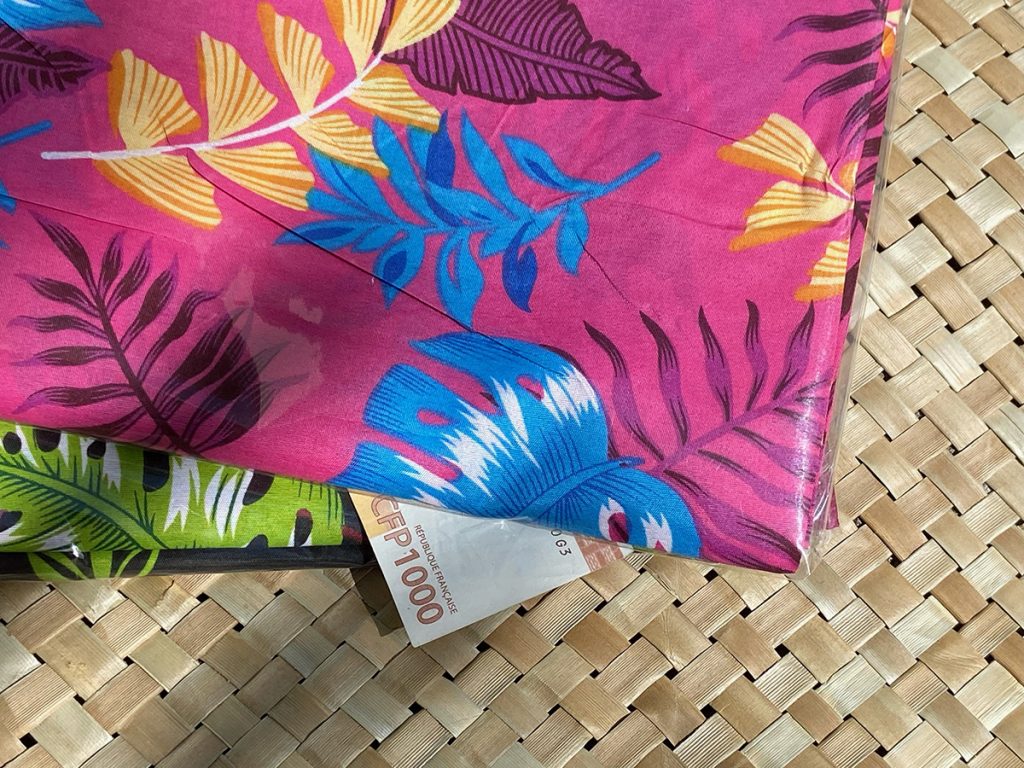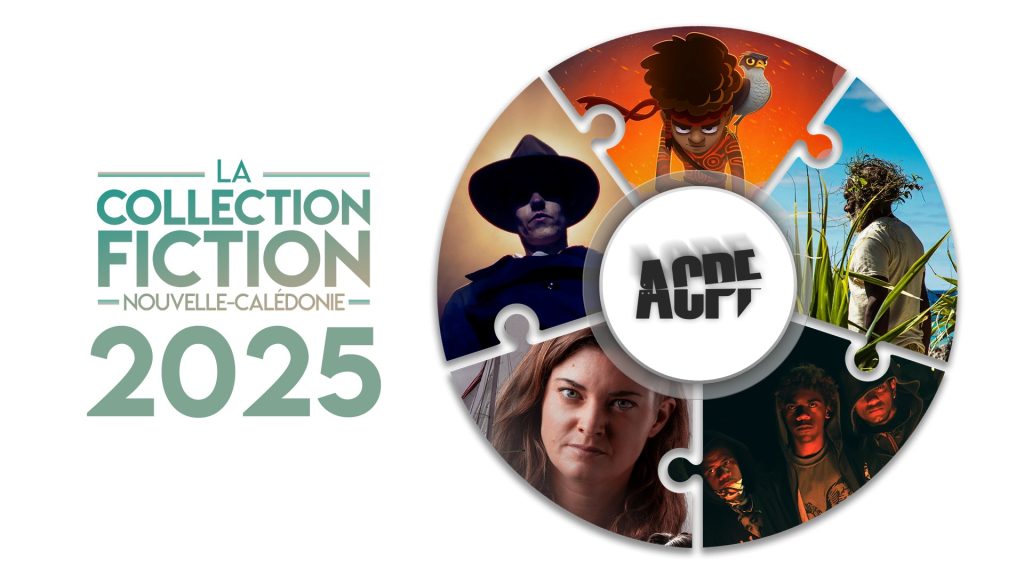Anchored in the Pacific and open to the world, the festival highlights emerging filmmakers from New Caledonia, the Pacific, and beyond. The landscapes and atmospheres of each territory serve as a source of inspiration, making every cinematic image unique.
The municipalities partnering with RECIF are full of natural sites, heritage, flavors, and experiences to share—potential filming locations, but also places for discovery and emotion, to be experienced beyond the screen.
Noumea – the capital with countless activities
www.nouvellecaledonie.travel/destination/noumea/
Dumbea – a blend of city life and immersion in nature
www.ville-dumbea.nc/actualites/carte-touristique-de-dumbea
Mont-Dore – the gateway to the South of New Caledonia
www.nouvellecaledonie.travel/destination/grand-sud/guide-du-mont-dore/
Païta – between mountains, valleys, and lagoon
www.nouvellecaledonie.travel/offres/mairie-de-paita-paita-fr-3915100/
Boulouparis – a change of scenery just 1 hour from Nouméa
www.facebook.com/BoulouparisTourisme/
La Foa – nature, culture, and heritage
www.nouvellecaledonie.travel/destination/cote-ouest/guide-la-foa-farino/
Bourail – a variety of activities between land and sea
www.nouvellecaledonie.travel/destination/cote-ouest/guide-bourail/
Kone, Voh, Pouembout – exploring the bush of Northern New Caledonia
www.nouvellecaledonie.travel/destination/cote-ouest/guide-kone-voh-pouembout/
Thio – a thousand colors and a beating heart
Hienghene – the authenticity of the East Coast
www.nouvellecaledonie.travel/destination/cote-est/choses-incontournables-a-faire-a-hienghene/
Ouvéa – the island closest to paradise
www.nouvellecaledonie.travel/destination/les-iles/guide-ouvea/
For more information, visit our partner New Caledonia Tourism : with UNESCO world heritage-listed lagoons, a vibrant cultural mix, vast untouched natural landscapes, and a pleasant temperate climate, New Caledonia offers a tourist experience that is as exotic as it is diverse… in one word : unique.
New Caledonia is a French overseas territory located in the southwest of the Pacific Ocean, approximately 16,900 kilometers from mainland France. Comprising several islands, including Grande Terre (the main island), the Isle of Pines, and the Loyalty Islands, it boasts a great geographical and cultural diversity.
It is home to the world’s largest lagoon, which was designated a UNESCO World Heritage Site in 2008, as well as the second-largest coral reef after Australia. Its biodiversity is unique, encompassing remarkable flora and fauna, both on land and in the ocean.
Location : New Caledonia is located 16,900 km from France (as the crow flies), 1,500 km east of Australia, and 1,700 km north of New Zealand.
Geography : Stretching 400 km in length and 50 km in width, the main island, Grande Terre, is encircled by an immense coral barrier and traversed from north to south by a mountain range, with peaks reaching nearly 1,600 meters in altitude.
Time Difference : Compared to France: +10 hours in winter and +9 hours in summer. Example: When it is 9:00 AM in Paris on December 10, it is 7:00 PM in Nouméa on the same day.
Telephone : The international dialing code for New Caledonia is +687.
Electricity : New Caledonia operates on 220V electricity (French-style plugs). Electricity is available throughout Grande Terre and the islands. In some remote areas, power is supplied by generators at specific times in the morning and evening. Solar energy has become increasingly popular, with more widespread installation of solar panels and water heaters, providing electricity even in the most isolated regions.
Status : In 2003, the status of Overseas Territories (TOM) was replaced by Overseas Collectivities (COM). This new status grants New Caledonia a unique administrative framework, allowing it to establish local regulations distinct from mainland France in various areas. It also ensures the gradual transfer of powers from the French government to New Caledonia.
www.nouvellecaledonie.travel/guide-de-voyage/passeport-visa-et-douanes/
The customary ceremony in New Caledonia
 In New Caledonia, performing the customary ceremony is a gesture of respect and recognition towards Kanak culture. It is an important tradition, particularly when visiting a tribe, attending an official meeting, or participating in a cultural event.
In New Caledonia, performing the customary ceremony is a gesture of respect and recognition towards Kanak culture. It is an important tradition, particularly when visiting a tribe, attending an official meeting, or participating in a cultural event.
How to perform the customary ceremony?
Prepare a small gift. The most common offerings include a sarong or colorful fabric, often accompanied by a symbolic sum of money, usually a 500 or 1,000 Pacific Francs bill. You may also offer food items such as rice, coffee, tobacco, or sugar, or bring specialties from your home region. The most important aspect is the gesture and intention, rather than the material value of the gift.
Upon arrival, look for the chief or an elder of the clan, as they are the customary representatives. If you are accompanied by a local resident, they can guide you through the process.
Give a simple and sincere speech. There is no strict protocol — just express the reason for your visit and your respect for the place and its people. If you wish, you can say a few words in Drehu, Nengone, or another Kanak language (for example, “Bozu”means hello in Drehu).
Place the gift in front of the chief or elder as an offering. Once it is accepted, an exchange of words takes place to officially welcome you.
After performing the ceremony, you are considered a guest and will benefit from the hospitality of the tribe. It is recommended to follow local customs and ask for permission before taking photos.
Perform the customary ceremony demonstrates respect for Kanak culture and your hosts. This symbolic act strengthens the bond between visitors and locals. It is an essential gesture that ensures a warm welcome.
Southern province film office (New Caledonia)
The Southern province supports the audiovisual and film industry through its Film Office, which provides free assistance and serves as a vital link between audiovisual or film productions and public authorities.
The Film office :
- identifies and updates professional skills through the TAF Database, which includes Technicians, Actors, and Extras ;
- helps you find the locations you need ;
- offers a free pre-production service, particularly for administrative procedures such as filming permit applications ;
- has aerial footage available for sale (or, in certain cases, provided free of charge to promote New Caledonia internationally) ;
- provides professional rigging equipment free of charge for productions.
To find out more: https://www.province-sud.nc/votre-province/directions/dcjs/bureau-daccueil-des-tournages/
New Caledonian audiovisual and cinematographic support fund
The aid provided by the New Caledonian audiovisual and cinematographic support fund aims to promote the development of a high-quality film and audiovisual industry and the creation of a cinematic and audiovisual heritage in New Caledonia. It also seeks to professionalize a cultural sector that generates jobs and wealth while contributing to the promotion of New Caledonia’s image.
The New Caledonian audiovisual and cinematographic support fund is primarily financed by public institutions. It strengthens the financial support potential available to external productions to assist them in their projects.
This program offers funding for both development and production. Only projects supported by a New Caledonian audiovisual production company are eligible for this funding.
To find out more: https://www.province-sud.nc/catweb/app/demarches/fonds-de-soutien-a-la-production-audiovisuelle-et-cinematographique-de-nouvelle-caledonie
Films in New Caledonia
Discover the best of New Caledonian films and contact their production teams directly through the dedicated website promoting films made in New Caledonia and supported by the Audiovisual and Cinematographic Support Fund.
This website, created by the Government of New Caledonia in collaboration with local producers’ associations, provides regional, national, and international visibility for local productions. It serves as a valuable tool for broadcasters and programmers.
To find out more : https://filmsennouvellecaledonie.nc
Fiction Collection
 For the past four years, The Fiction Collection has been driven by the Caledonian Association of Fiction Producers (ACPF), which handles the subtitling and promotion of a program of Caledonian films, broadcast in the French Alliances across the Pacific region with the support of major Caledonian institutions.
For the past four years, The Fiction Collection has been driven by the Caledonian Association of Fiction Producers (ACPF), which handles the subtitling and promotion of a program of Caledonian films, broadcast in the French Alliances across the Pacific region with the support of major Caledonian institutions.
The 2024 Fiction Collection was showcased as part of the New Caledonia Film Festival last September in Australia and New Zealand, with a total of 22 screenings across 16 cities, attracting around 700 spectators. Previous editions have also allowed the program to be broadcast in Fiji, Vanuatu, and Singapore.
The 2025 Collection brings us some exciting new discoveries : 1 hour and 28 minutes of films made by New Caledonian filmmakers, subtitled in English and soon to be screened in Alliances Françaises across New Zealand, Australia, Fiji, and many more locations as part of the New Caledonia Film Festival !
This program includes presentations by the filmmakers and always finds an audience eager to discover Caledonian cinematic talents !
To find out more : www.facebook.com/acpfproducteursfiction
At the heart of local life, associations are powerful drivers of social connection and creativity. Through their initiatives, they contribute to the cultural richness of our region. Active in a wide range of fields – cinema distribution and creation, arts and cultural education, youth outreach, the promotion of Oceanian cultures, and the organization of festivals – they help weave a vibrant and supportive community network.
We extend our warm thanks to the many associations whose commitment has enriched the program of the very first edition of the RECIF Festival.
Associations based in New Caledonia
Association pour le Développement des Arts et du Mécénat Industriel et Commercial (ADAMIC)
ADAMIC manages and coordinates the cultural and social activities of Le Rex Nouméa, a unique creative hub for young people dedicated to discovery and multimedia exploration.
Fédération des Œuvres Laïques (FOL)
FOL promotes lifelong popular education and broadens access to culture for all, particularly within schools.
Le Châpito de Nouvelle-Calédonie
This association operates a traveling cultural structure that tours New Caledonia, fostering encounters between the arts and local communities by bringing performances directly to residents.
Cinéma de La Foa Association
It supports the screening of films in the La Foa region, hosting festivals, school sessions, and public screenings.
Bou rhaï Culture Association
Based in Bourail, it develops cultural activities and promotes access to quality cultural programming, including art house films.
Poa Boa Vi Thila Association
It manages the Pomémie Cultural Center, an active space for creation and dissemination that plays a key role in the cultural life of the Northern Province.
Cinéma d’ici et d’ailleurs Association
It offers a selection of international art house films alongside Caledonian productions, screened as opening features.
Jeunes et Toiles Association
It encourages young audiences to discover cinema and develops educational projects around image literacy.
Caledonian Association of Fiction Producers
This group brings together professionals from the audiovisual sector and supports the creation of local fiction content.
La Foa Film Festival Association
From 1999 to 2024, it played a major role in organizing the La Foa Film Festival and promoting cinema across New Caledonia.
Other associations
Festival International du Film Océanien Association
This association organizes and supports FIFO, the major annual event held in Papeete that highlights Pacific documentary and cinematic production.
Cinéma des Ailleurs Association
Founded in 2007, it created the Rochefort Pacifique Film & Literature Festival. It promotes global cultural exchange by organizing festivals and Pacific-focused events to showcase the cultures of peoples from other regions of the world.
Association des Jeunes Ultramarins pour le Cinéma et l’Audiovisuel (AJUCA)
AJUCA brings together young overseas creators from the audiovisual and related arts sectors. Its mission is to foster audiovisual creation and promote works from French overseas territories throughout mainland France.


